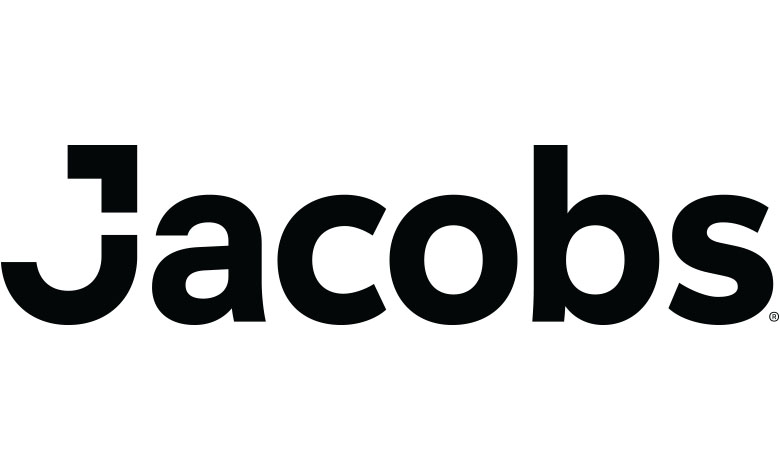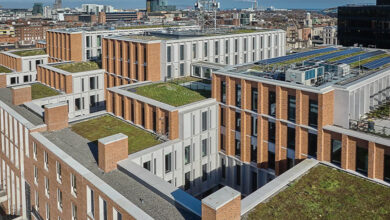Joined-up planning holds the key to unlocking housing delivery

Housing delivery is often treated as a standalone issue, but it should not be. New homes depend on infrastructure, which not only requires connections, but coordination. Transport, energy, and water systems make homes viable. When planned in isolation, delays can follow.
Ireland is facing one of the fastest rates of urban population growth in Europe. To meet this challenge, we must unlock land for housing. This is not just about land, bricks, and mortar. It is about how people live. Growth will provide new jobs, homes, and amenities but it must be carefully balanced to provide a high quality of life, access to services, and opportunities for all residents. The key to both speed and quality lies in how we coordinate, plan, and deliver infrastructure.
In recent years, Jacobs has worked with the Land Development Agency (LDA) on the assessment of state-owned lands across Ireland for housing. Many sites face familiar constraints: poor road access, limited transport, and ageing utilities.
There are already clear signals that integrated approaches can remove longstanding blockers. Agencies like the LDA and the National Transport Authority (NTA) are moving towards more coordinated strategies. The sites are there. Our challenge is to align the systems.
With more collaboration across agencies and the use of digital planning tools, the approach is becoming more integrated. And that is when things move faster. By aligning infrastructure development with housing needs from the outset, delays, and inefficiencies can be significantly reduced.
A well-connected home is not just defined by what is inside its four walls, but how it links to power, water, transport, and community.

Lifting the constraints: where housing delivery is gaining ground
Jacobs’ recent assessments show the same pattern in cities and towns across Ireland: challenges with road access, limited or absent public transport, and constrained utility infrastructure. These are coordination issues, not dead ends.
The LDA’s remit has expanded, with a goal to maximise the potential of every tool at our disposal and accelerate housing delivery to the levels necessary to meet the State’s needs. The NTA and Uisce Éireann are working more closely with planning teams. And Jacobs’ long-term role has been supportive of a system-led approach.
Ireland is not alone in facing these challenges. The paths to resolving them may vary widely from one region to the next, but the common thread is coordination and strategy correlates to speed and quality.
For example, the Netherlands’ Recovery and Resilience Plan ties housing growth directly to infrastructure investment, with mobility, decarbonisation, and sustainable urbanisation all treated as linked priorities. In Freiburg, Germany, tram routes and schools were built before the homes, matching transport infrastructure to the growth of the community with a high-quality system in place early.
Connections that accelerate delivery
Public transport is the fastest lever available to make housing work, especially in towns and smaller cities with limited rail networks, and buses will carry most of the load. They can be deployed quickly and re-routed as demand changes. But they still need the right infrastructure.
Since 2021, the NTA has committed to transition towards zero emission bus fleets. This commitment was reinforced in 2024 with the launch of its first Sustainability Strategy 2024-2030 which outlines the transition of nearly half of its Dublin metropolitan bus fleets and 40 per cent of combined bus fleet in Cork, Limerick, Galway, and Waterford to low or zero emission vehicles by 2026.
The decarbonisation challenge creates an opportunity to deliver upgraded depots, stronger local energy infrastructure, and better support for new housing. Both the NTA and LDA recognise that transport is not separate from housing, it is what makes new communities viable. Integrated planning between the two is essential, not only to reduce emissions through modal shift, but to speed up delivery by coordinating depots, land access, grid connections, and development timelines.
The demand for more lands to accommodate modernised bus depots is likely to see an exponential upward trend across the country. National government bodies and local authorities will need to work collaboratively on land use planning for combined services required to support housing development.
An interim bus depot we designed and nearing completion at Jamestown in Dublin shows what is possible when that alignment happens early. Jacobs worked with the NTA from the outset, integrating land use planning in the identification of the site, before designing the depot, navigating statutory consents and planning gateways through close engagement with local authorities, then developing the procurement strategy. The depot is now close to delivery in under four years. This paves the way for existing depots to be upgraded as required for the expansion of the electric fleet, while also achieving combined land use and bus network goals that align with wider housing objectives.

Capacity, constraints, and local solutions
As housing demand grows and the shift to electric transport and heating accelerates, pressure on Ireland’s energy infrastructure is increasing.
Current supply constraints, aging infrastructure, and the sustained reliance on imported, non-renewable energy pose significant barriers to the delivery of new housing across Irish cities and towns.
Meeting this demand will require national investment in capacity alongside smarter, more local solutions that build resilience into the system. Innovative solutions for the production, storage and transmission of energy will be the key to providing long-term resilience.
Direct current (DC) microgrids are one of the most promising options and small-scale residential projects have already been piloted across the globe. They store and distribute energy on-site, reduce conversion losses, and cut strain on the grid. They work especially well for transport sites. Battery electric buses already run on DC power, so removing AC (alternating current) to DC converters simplifies the system and reduces cost.
Depots can be a proving ground. Their predictable demand and closed-loop setup make them ideal candidates for localised energy infrastructure.
To scale this approach, regulation and planning policy will need to evolve. Land-use frameworks should allow for mixed infrastructure. Planning should support decentralised systems. And stakeholders need clearer pathways to evaluate and implement alternatives.
Many housing delays also stem from capacity limits in water supply, drainage or treatment networks. Ireland’s water infrastructure is managed nationally, but its impact is local. Digital tools like Jacobs’ Digital OneWater model help planners understand how to align housing needs with water system upgrades. In New York, the same tool helped free up urban land by integrating wastewater planning into broader city design.
“A well-connected home is not just defined by what is inside its four walls, but how it links to power, water, transport, and community.”
Data for joined up delivery
Bringing together transport, energy, and water planning is complex, but the adoption of digital tools allows a greater understanding of how to integrate the needs of housing, transport and utility infrastructure from an early stage.
These platforms offer deeper insights into complex systems and enable substantial cost savings by allowing hundreds of planning scenarios to be explored simultaneously, reducing the risks associated with these developments.
Digital models help planners and delivery agencies run hundreds of planning scenarios at once, assessing the impacts of different timelines, site choices, and capacity constraints. Modelling growth needs across infrastructure and housing helps join the dots and allow for more accurate scenario modelling to plan the cities of the future.
To assess and prioritise the best locations for bus depots, we use heat mapping tools to ensure that suitable public transport is available to meet future demand, by locating these in areas that best serve the fleet and bus routes. These tools consider key information such as population numbers, property values, bus routes served, future fleet requirements, access, safety and route widths. Modelling tools, such as Jacobs FleetMax, help planners find strategic opportunities for transitioning fleet in the early planning and design phases of infrastructure projects and programmes, ensuring that rural locations can be served by zero emission public transport vehicles.
The broader shift is about working across disciplines. Data models are only as good as the conversations they support. When planning and delivery teams use a shared view, decision-making improves.
Faster, smarter, and more human
Ambitious targets for growth have been set out in Ireland’s National Planning Framework to meet escalating housing and infrastructure demand. With one of the greatest projected urban population increases in Europe by 2051, time is of the essence.
Early and integrated planning of energy, transport, and water infrastructure across government departments – supported by digital tools – can be a catalyst not just for agile housing delivery, but for healthier, more connected communities. When infrastructure and housing are planned together, the result is not only more efficient development, but environments that actively support people’s wellbeing and quality of life.
We can already see this approach in action. The City of Edinburgh has adopted a similar model in its public realm redesign, putting health and people at the heart of infrastructure planning. It is shown how systems designed together can support both wellbeing and movement. The way people live, travel, shop, socialise, work, and play is evolving, reflecting global trends and modern technologies. Edinburgh is recognising these changes by putting people at the heart of design.
Jacobs worked with the City of Edinburgh Council on a city centre redesign to shape vision, delivery planning and business cases for new public spaces. The changes could create wider pedestrian areas, cycle routes, greenery, seating, and traffic reduction – all aimed at creating a more inclusive, healthier public realm with better connectivity, safety, and wellbeing.
It shows that joined-up planning builds not just transport or housing networks, but better places to live.
Planning systems together allows housing and infrastructure to become mutual enablers Behind the aspirational targets for housing delivery, sits an ultimate goal – to create thriving, resilient places for people. Sequencing infrastructure from the start, with alignment across all agencies, is the essential path to that goal.
As the key influencing government organisations scale up their land activation efforts, leveraging digital tools and a systems-based approach can unlock the land, homes, and sustainable communities needed across the country. By treating infrastructure as a starting point, we will build quicker, better, and for the long term.

E: George.Wade@jacobs.com
W: www.jacobs.com





